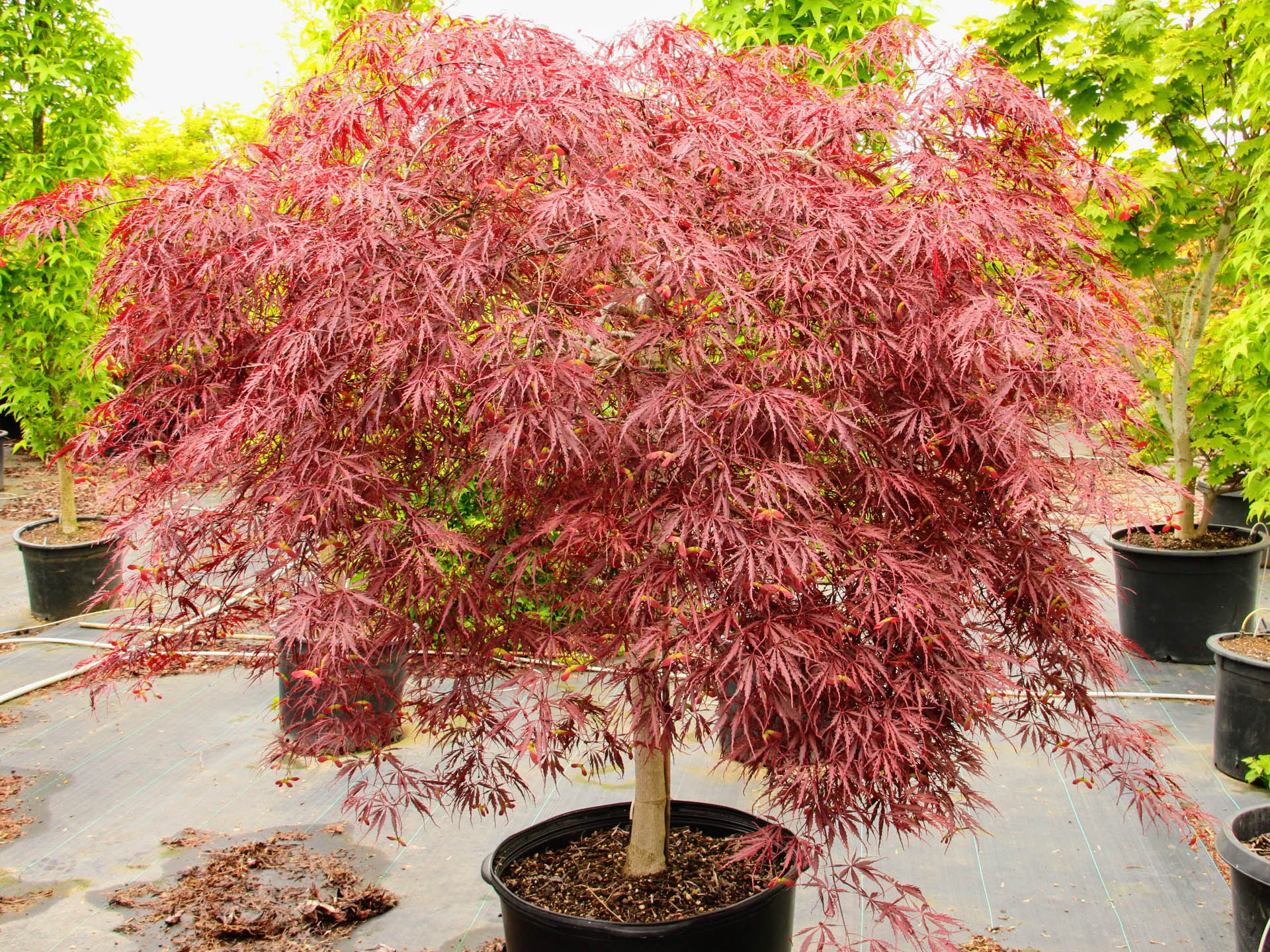

- #TAMUKEYAMA JAPANESE MAPLE IN CONTAINER HOW TO#
- #TAMUKEYAMA JAPANESE MAPLE IN CONTAINER INSTALL#
- #TAMUKEYAMA JAPANESE MAPLE IN CONTAINER PROFESSIONAL#
- #TAMUKEYAMA JAPANESE MAPLE IN CONTAINER CRACK#
If you can stick your finger into the soil and it’s dry to your first knuckle, it’s time to add water. Pots tend to dry out more quickly than the soil in the ground. It’s one thing to keep trees in the ground watered, but it’s another thing entirely for trees in containers. Japanese maples like consistent moisture and they won’t grow as well if they experience regular drought.
#TAMUKEYAMA JAPANESE MAPLE IN CONTAINER INSTALL#
If you live in a rainy area, a dropper might be all you need, or you might want to install a drip irrigation system that hooks up to your hose spigot. If you don’t have a container watering system set up or your plant won’t be hit by sprinklers, you might want to invest in some sort of irrigation system. Tamukeyama Japanese Maple Acer palmatum var. Japanese maples can survive in less light, but they tend to become leggy.
#TAMUKEYAMA JAPANESE MAPLE IN CONTAINER HOW TO#
How to Care for Potted Maplesĭepending on the cultivar, place your tree in a spot where it will receive partial to full sunlight. If so, add a bit more potting medium and water again. You’ll probably find that everything settled a bit more than expected. Once you have the right height, fill in around the roots with soil.īe sure to leave an inch or so of space at the rim to allow for easy watering. Here’s everything you need to know, beginning with recommended cultivars to choose from. If it’s sitting too high, scoop a little out. Best Cultivars Pick the Perfect Container Choose a Potting Soil Planting Tips How to Care for Potted Maples Repotting If you want to grow a tree in a container, you can’t find a better option than Japanese maple. If it is sitting too low, add a bit more soil. Remove the plant from its pot and gently loosen the roots. These don’t last as long or protect the roots from cold as well as other options such as cement or stone do, but they hold water well. Note that when grown in a container, it may not perform exactly as indicated on. Plastic is a popular choice because it’s affordable, durable, and lightweight. It is even sizeable enough that it can be grown alone in a suitable container. You can wrap it in burlap or cardboard to help prevent this, or go with a different material. It’s a serious challenge to repot a huge tree, and you don’t want to be doing it every year after your pot cracks during the winter.
#TAMUKEYAMA JAPANESE MAPLE IN CONTAINER CRACK#
Terra cotta is usually cheaper than other materials and breathes well, but it also tends to crack in areas where freezing temperatures are common. If you live somewhere that experiences freezing winters and sweltering summers, metal is probably not the right choice. Tamukeyama is a graceful, mounding, dwarf Japanese Maple with waxy, deep red bark and beautiful cascading branches. But different materials can make your job easier or more difficult, depending on what challenges you’re facing.įor instance, metal containers tend to heat up quickly and don’t protect the roots from cold as well as, say, cement does.


When it comes to selecting the right container, pretty much anything that can hold soil and has drainage holes will work.
#TAMUKEYAMA JAPANESE MAPLE IN CONTAINER PROFESSIONAL#
Be sure to use fresh potting soil during this process.If you have never done root pruning, it's best to consult a nursery professional who can give you some tips and advice.Fast Growing Trees carries two- to three- or three- to four-foot-tall plants if you want to bring this beauty to your yard. Late February is the best time, right before the weather begins to warm up. Another sign that it’s time to root prune is that the top of the tree leaves are crispy and unhealthy looking. Root prune your container maples when they are so root bound that water doesn't soak through the pot. To reduce the potential for spreading disease, clean your pruners with alcohol after each cut, especially if cutting dead or diseased branches. Cut out any dead, diseased, or damaged branches, then prune to shape. January during a dry spell can also be a good time for pruning and seeing the tree’s core structure. June through August is good for pruning aesthetically, since you can see the leaves and the overall shape of the tree. Mulch the surface around the trunk with 1-2 inches of compost. Specimen/accent or group around the home or yard or. Tamukeyama Japanese Maple Care Tips Plant Tamukeyama in easy-draining, light soil with a pH of 5.7-7.0. Dissected forms of Japanese maples are generally grown for their attractive foliage and low-spreading shape. It has very beautiful dissected dark red leaves and can grow in USDA hardiness zones 5 through 8. The damp environment may make some maples more susceptible to bacterial and fungal diseases. Tamukeyama is a weeping Japanese maple that reaches up to 6-7 feet tall and 10 wide. Try not to prune your maples during the rainy season. Pruning is an important part of maintaining a container japanese maple.


 0 kommentar(er)
0 kommentar(er)
